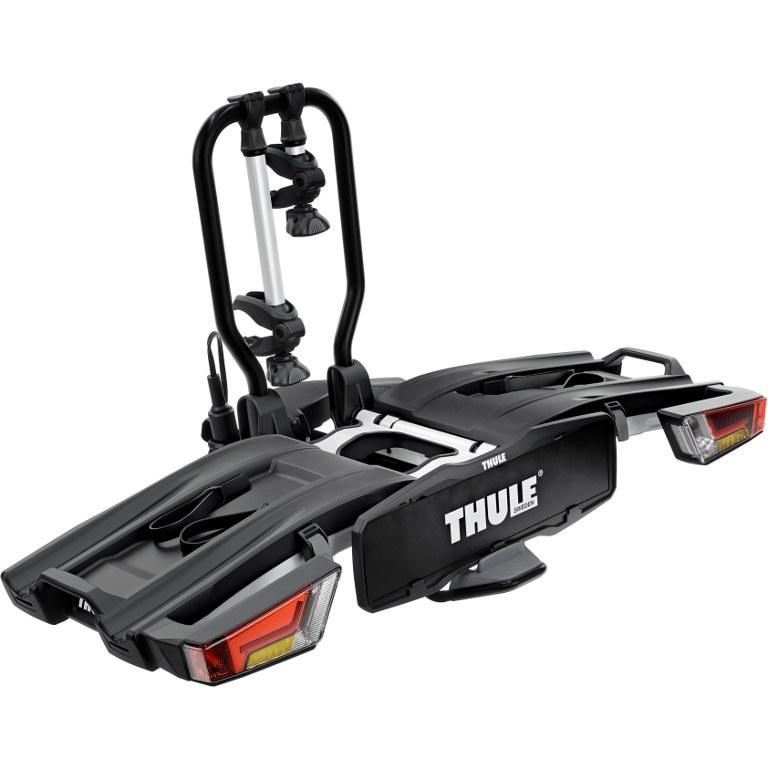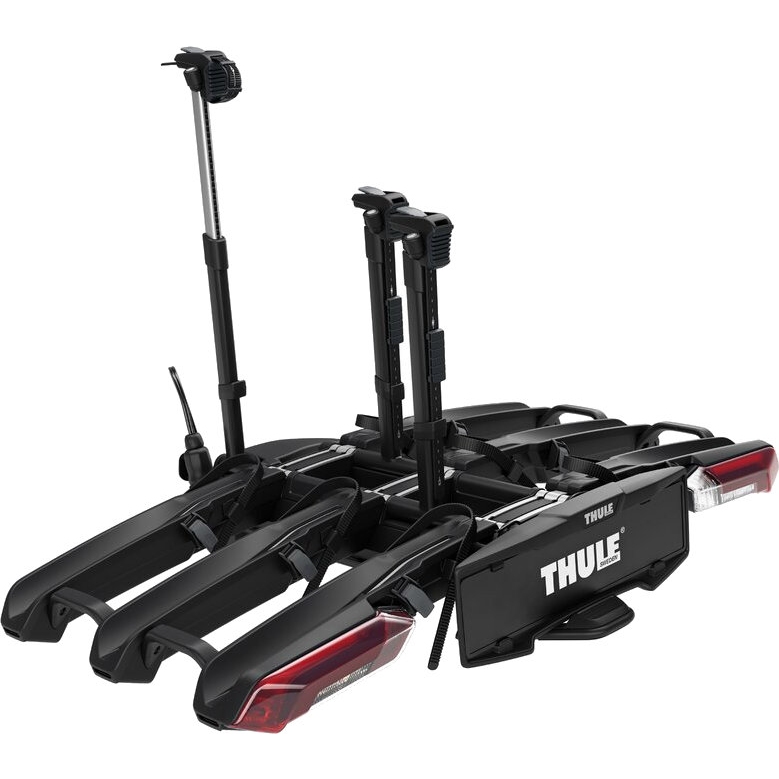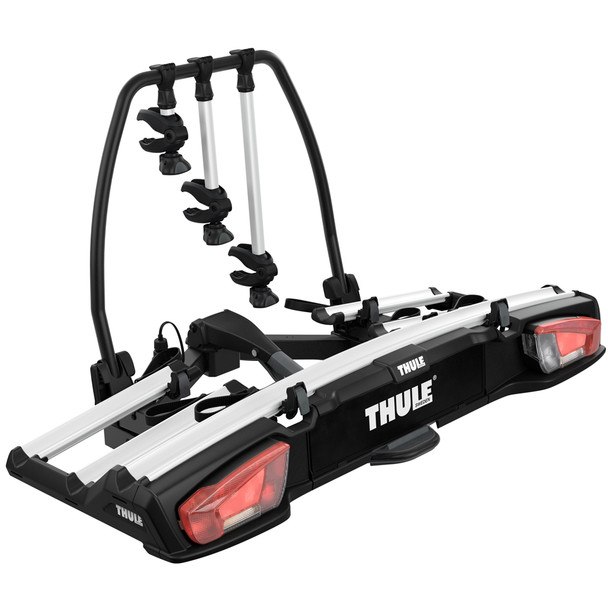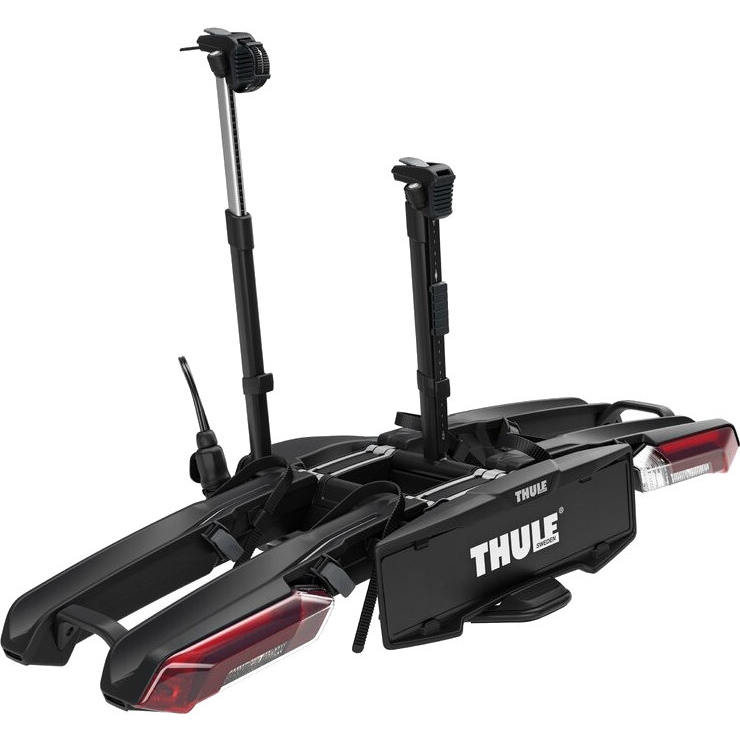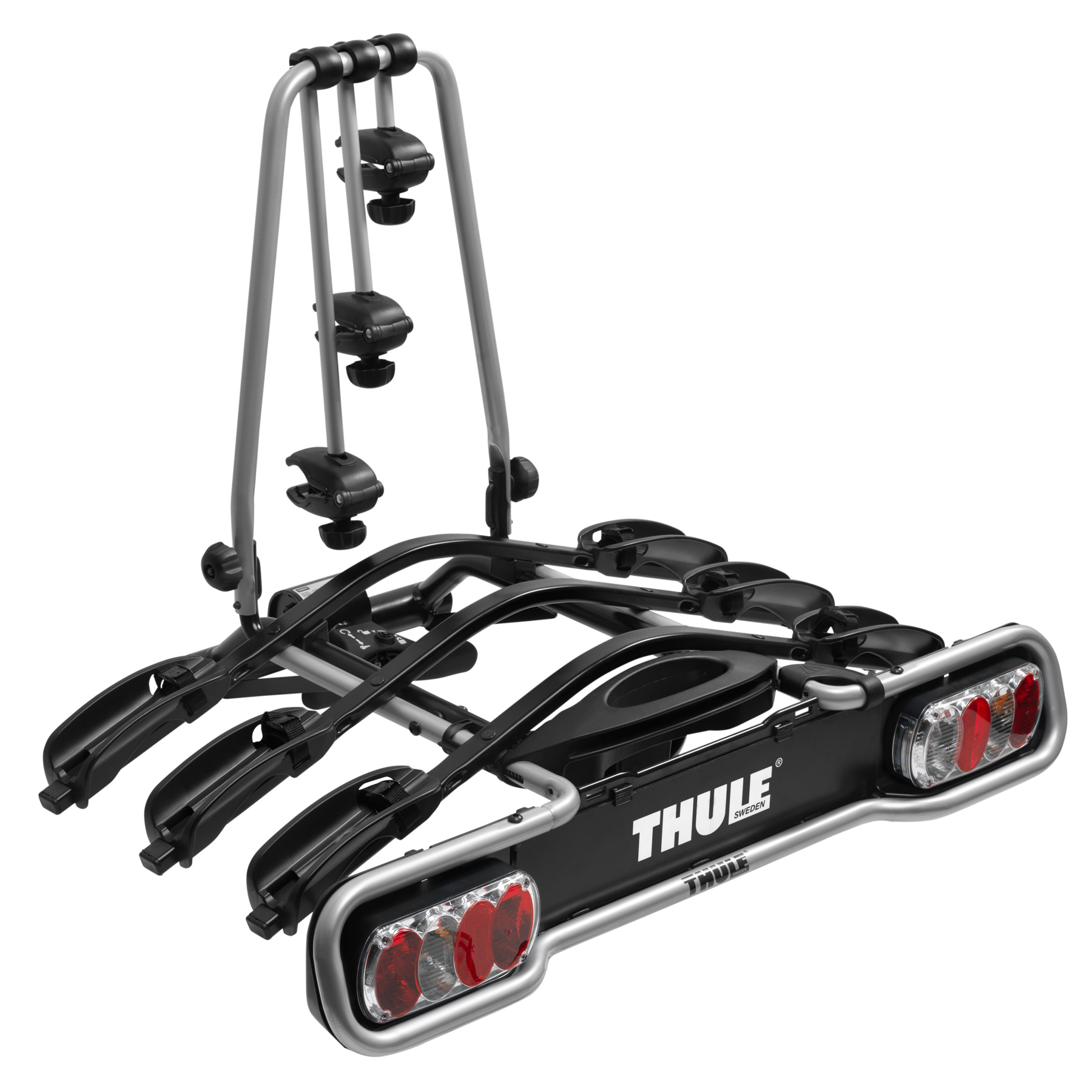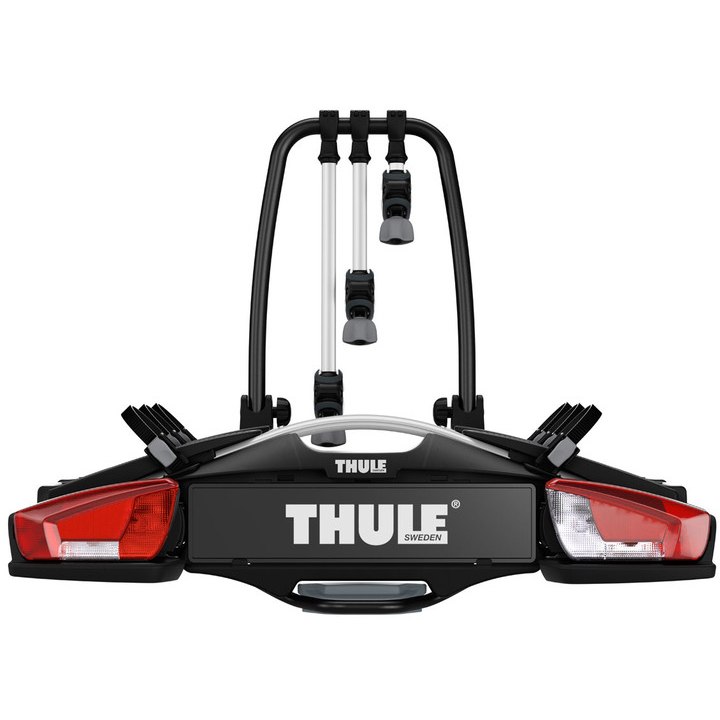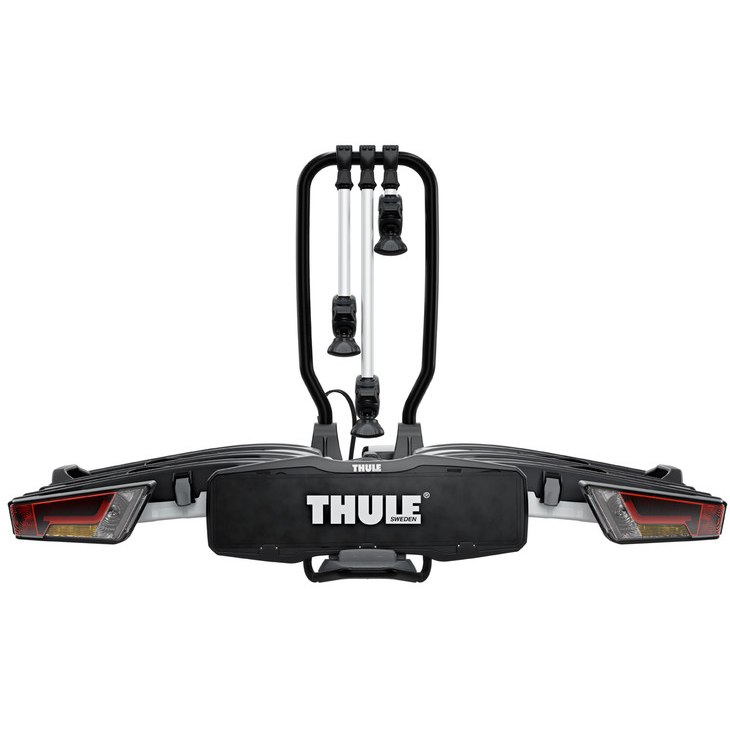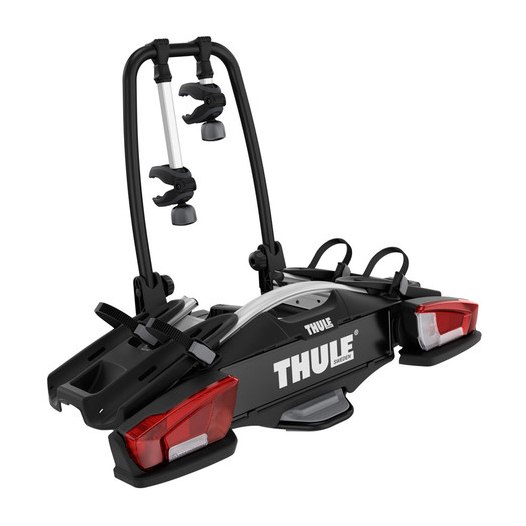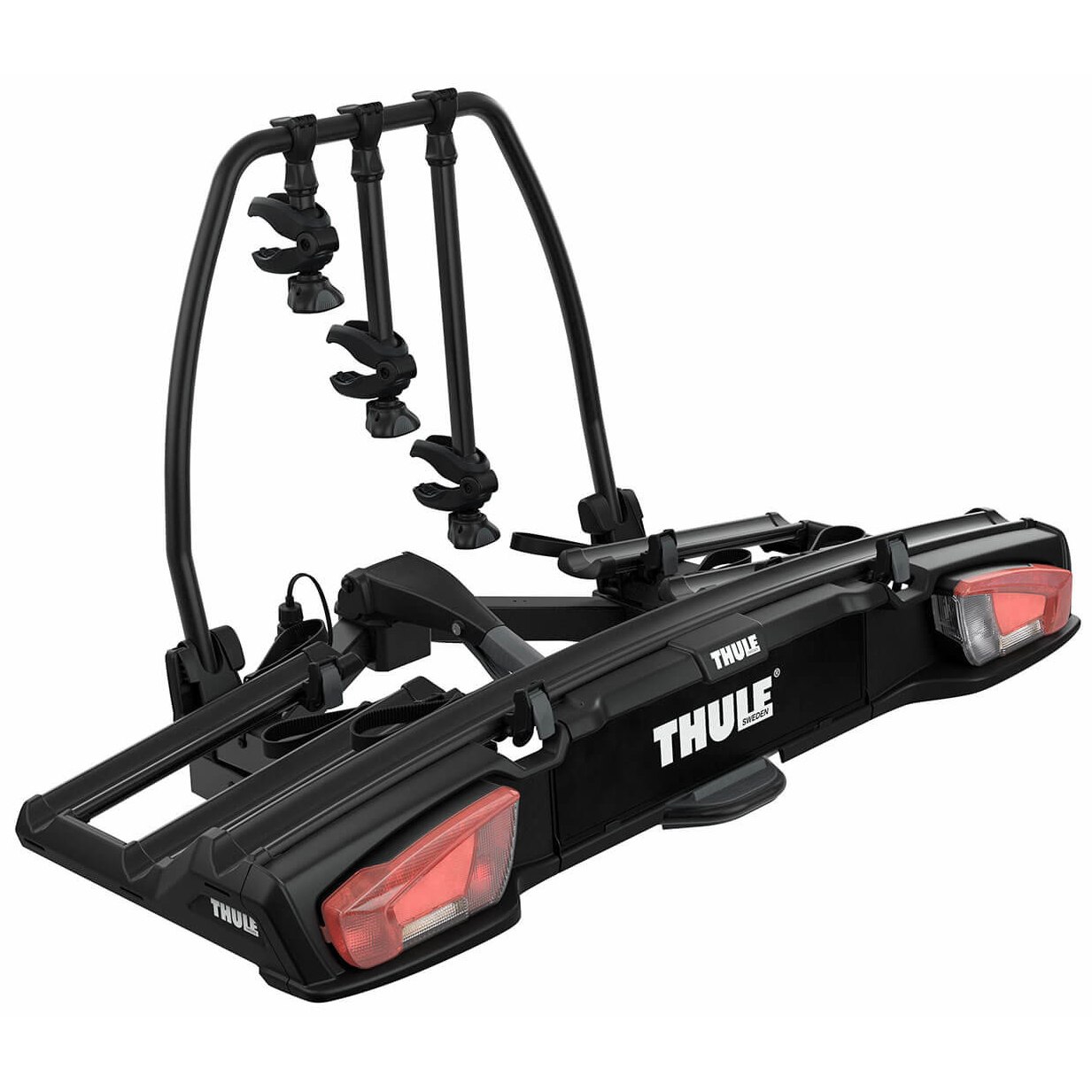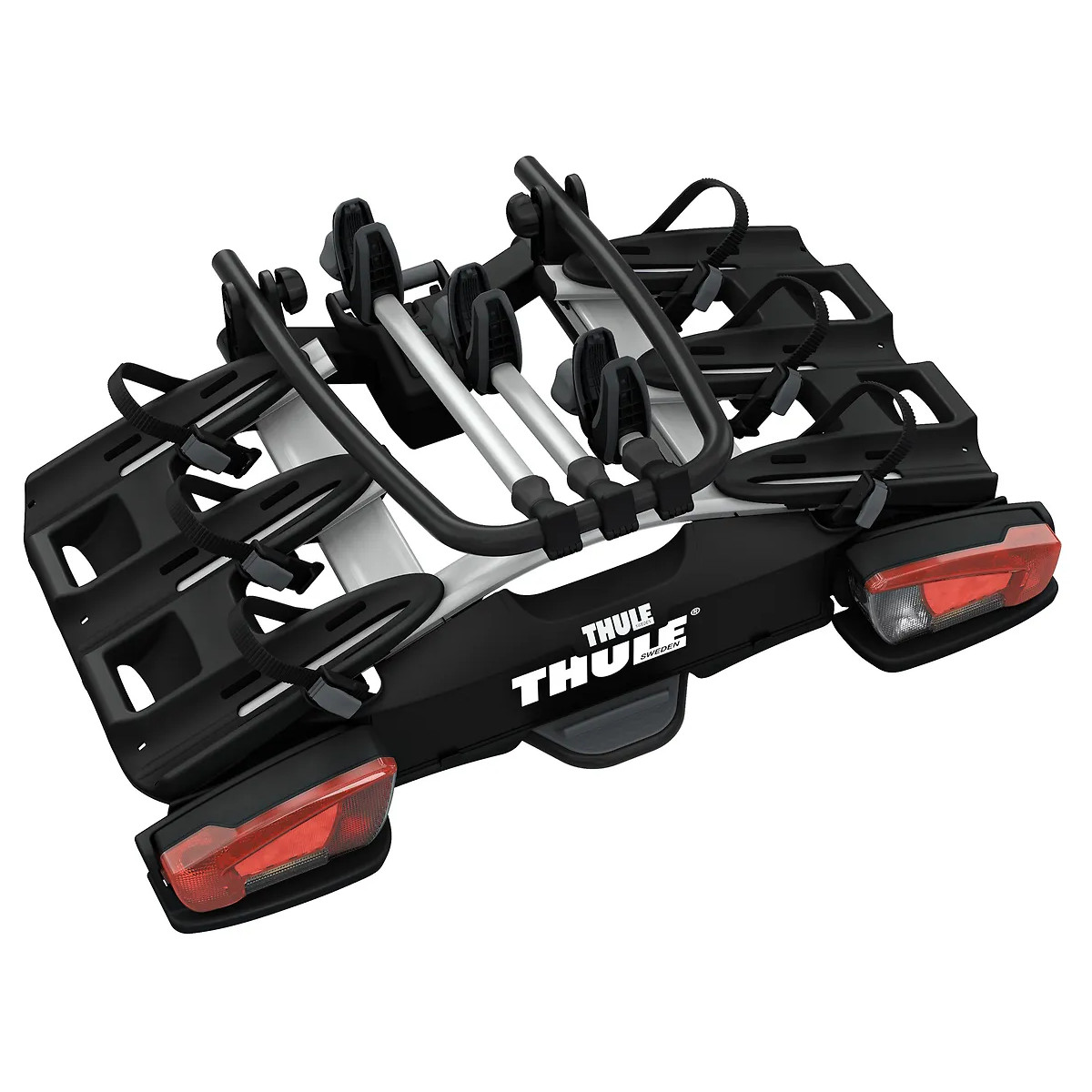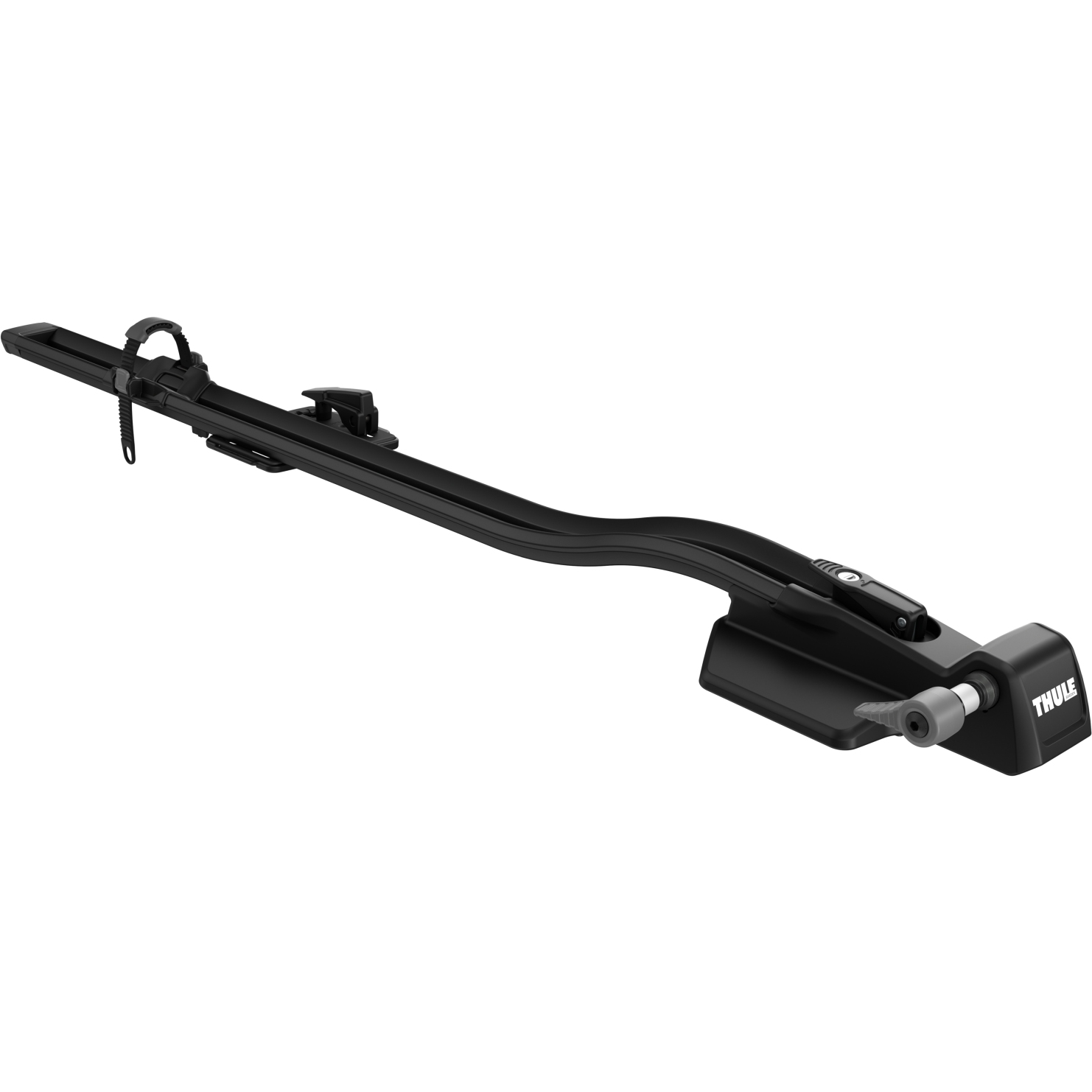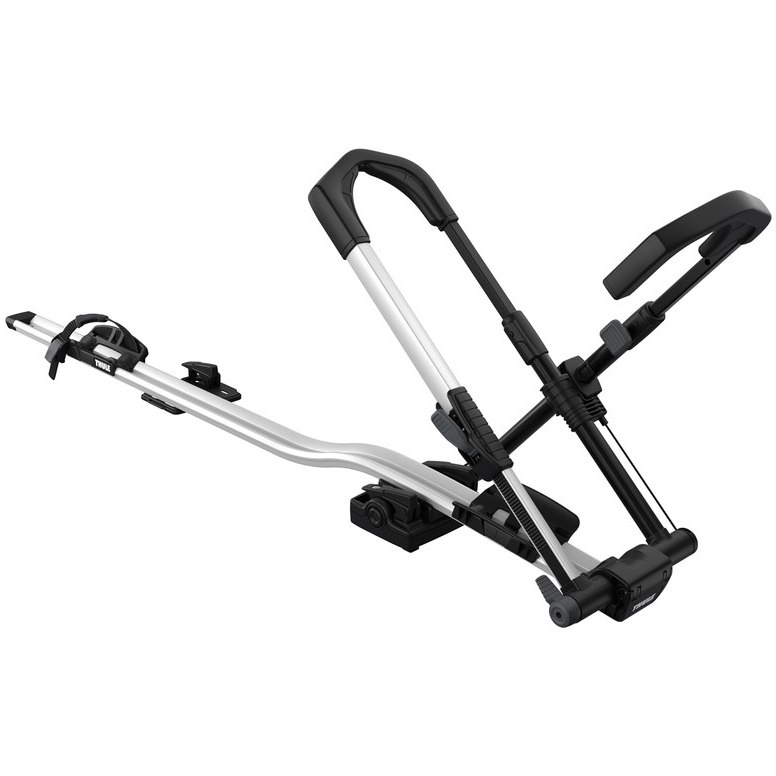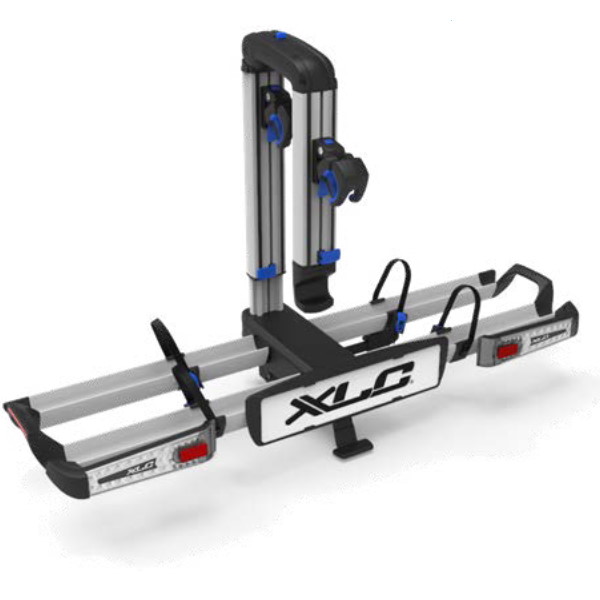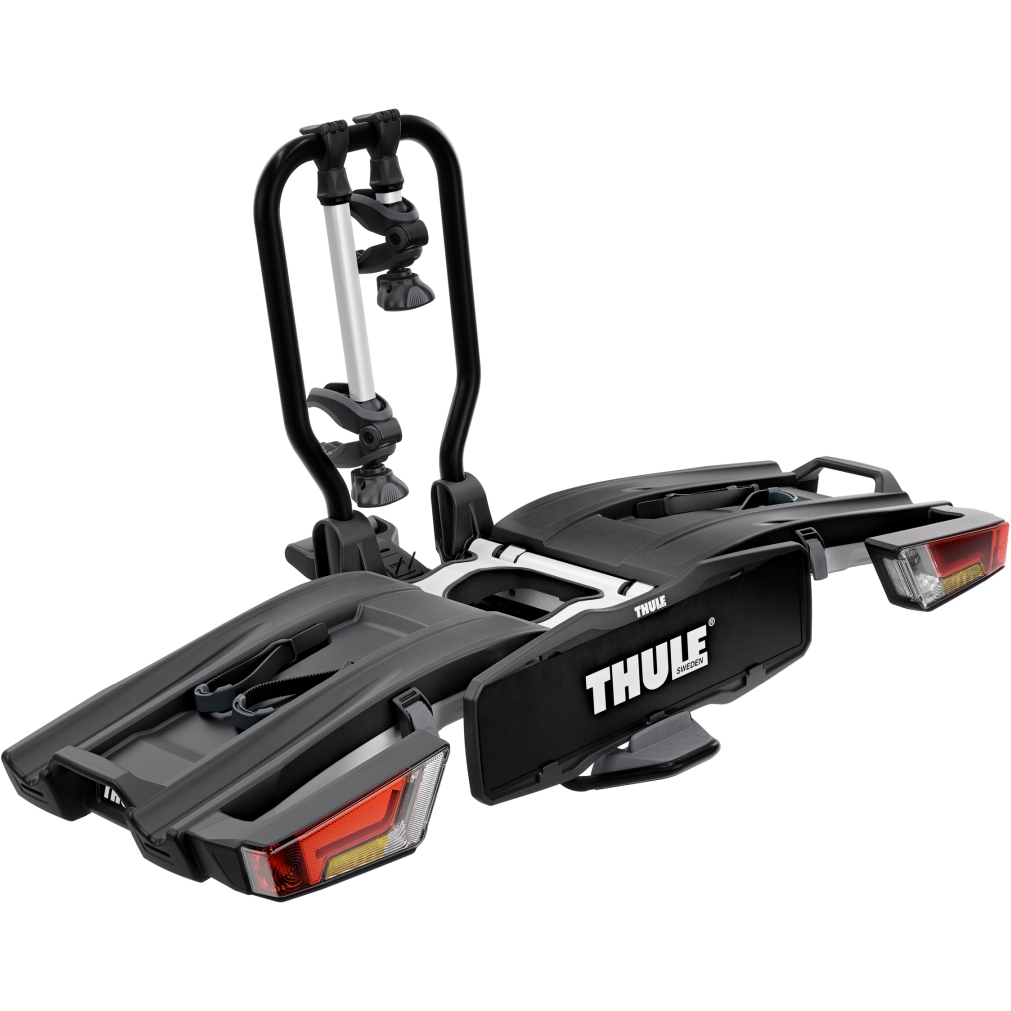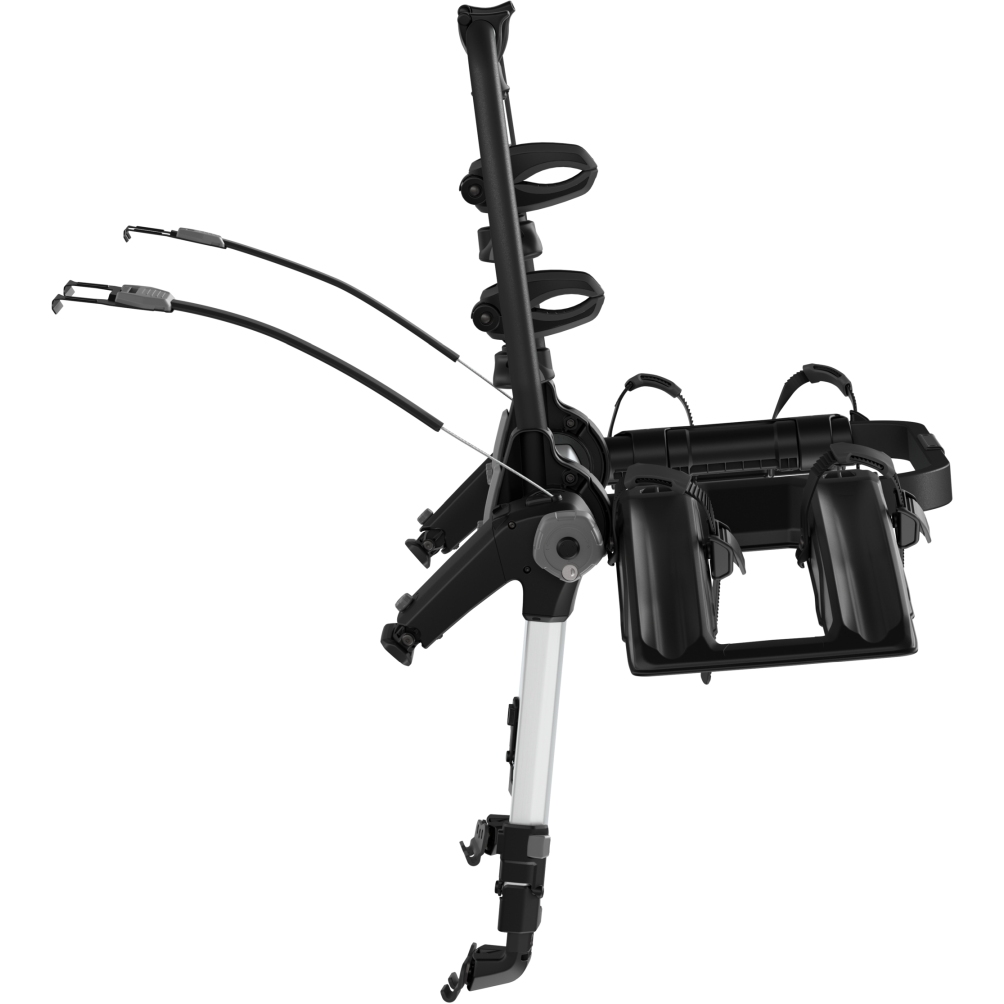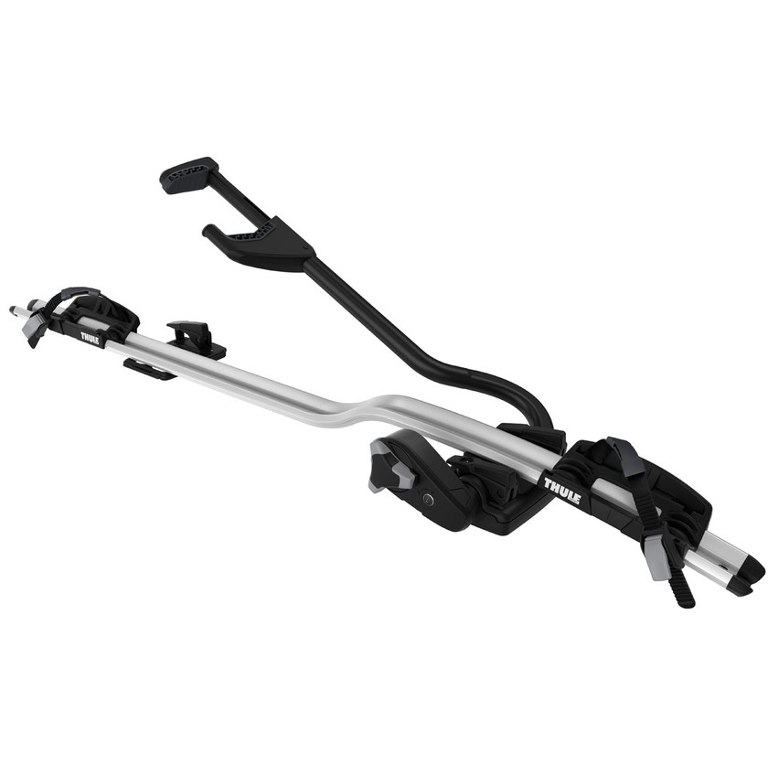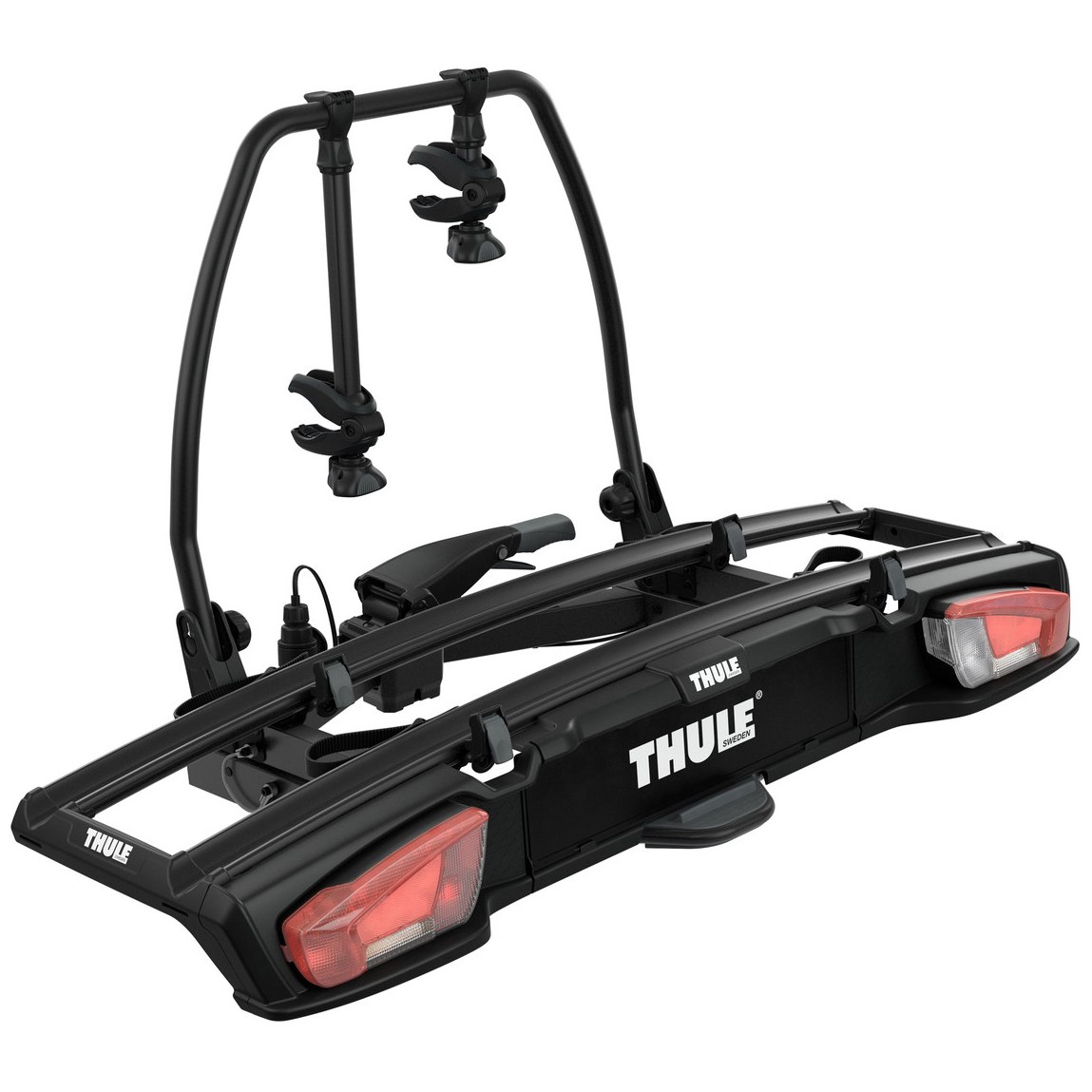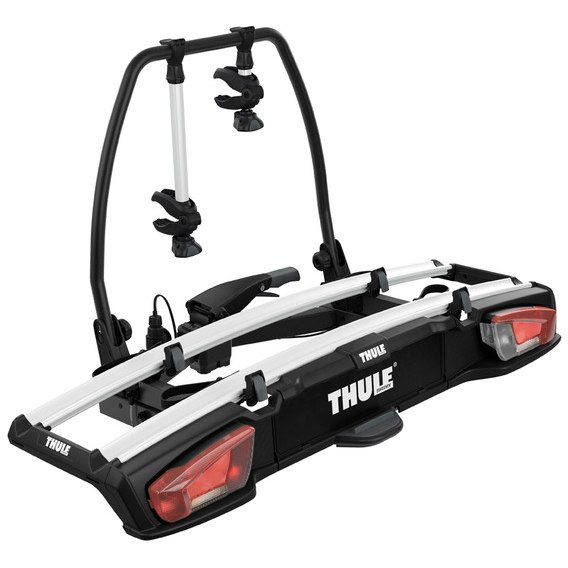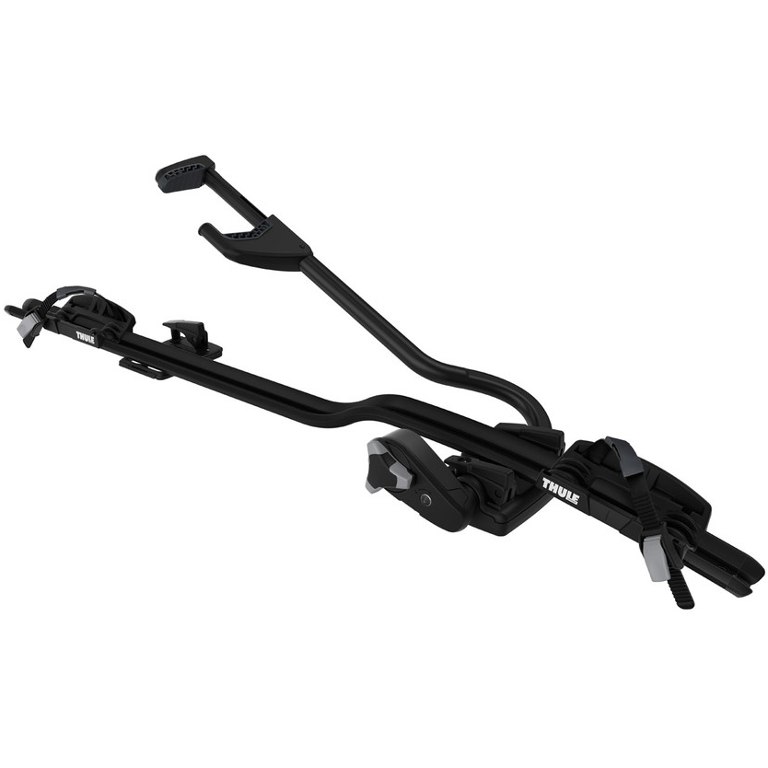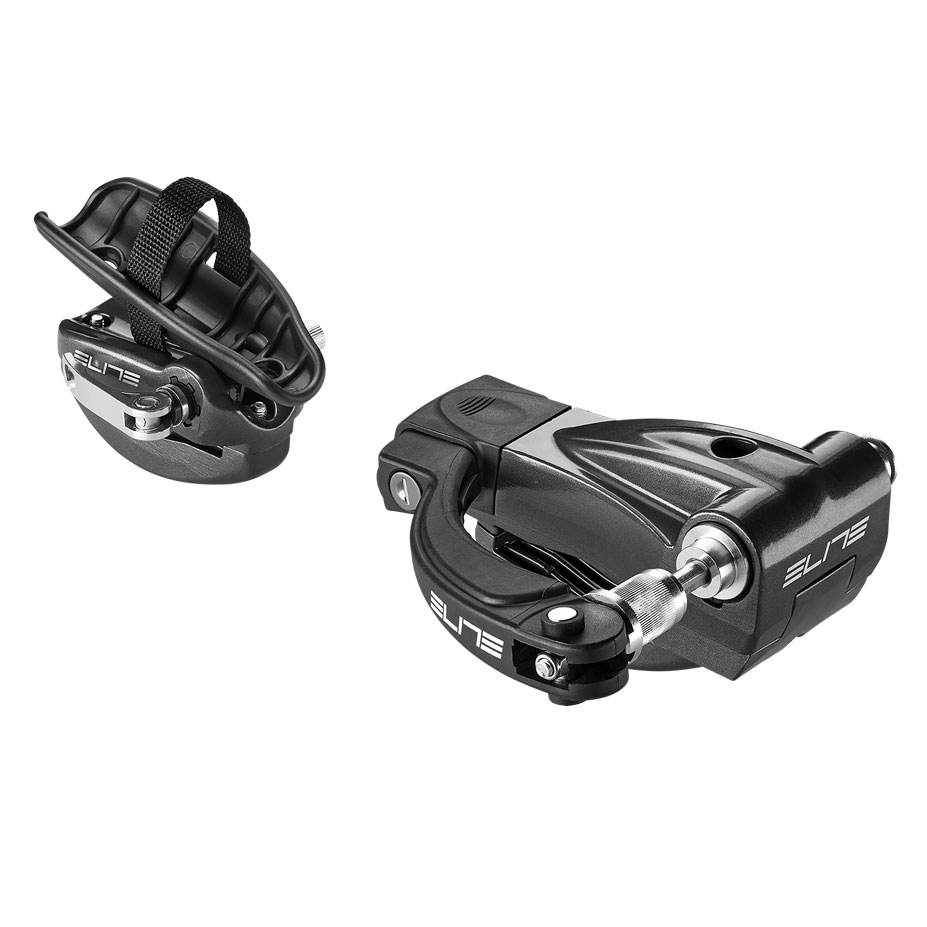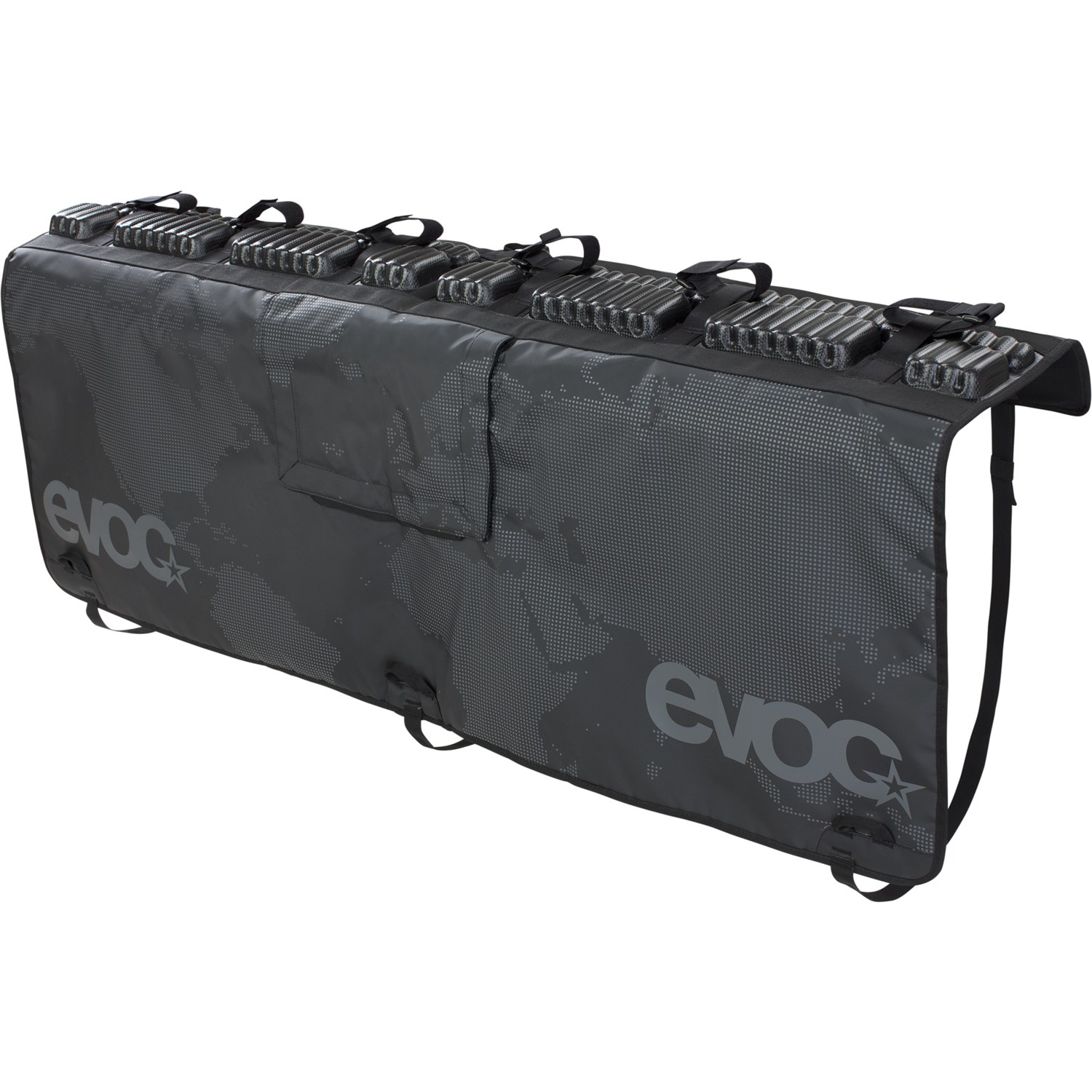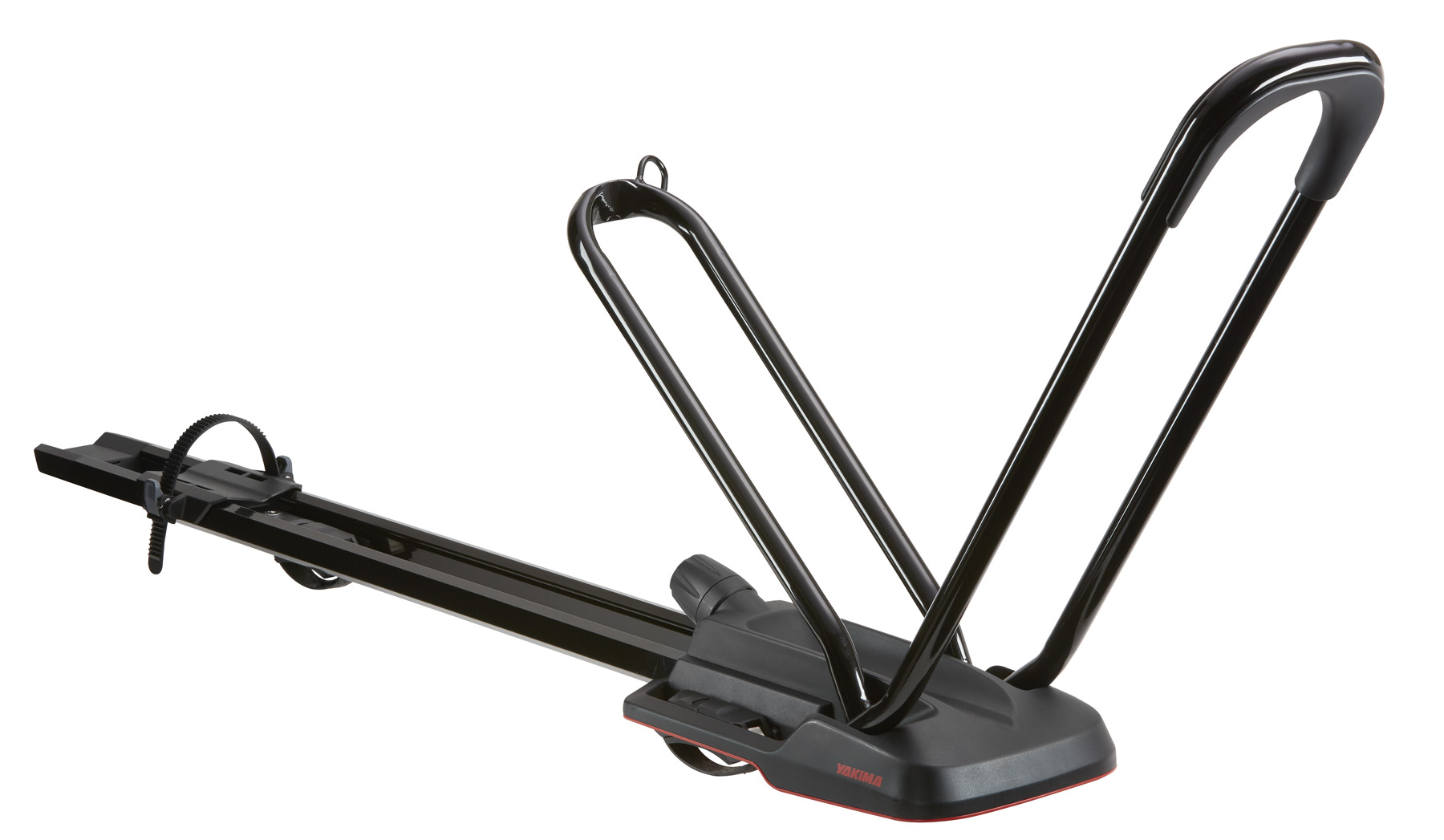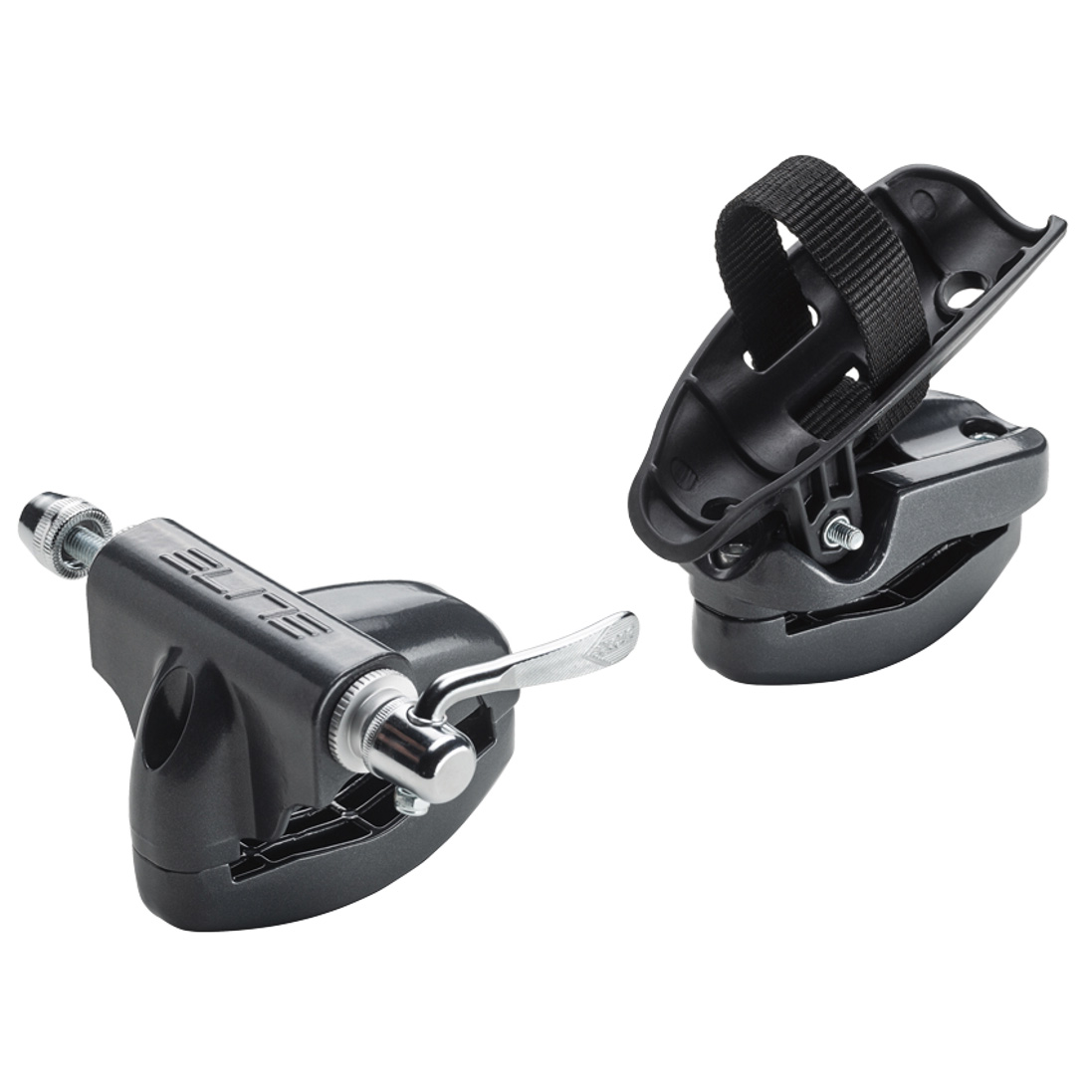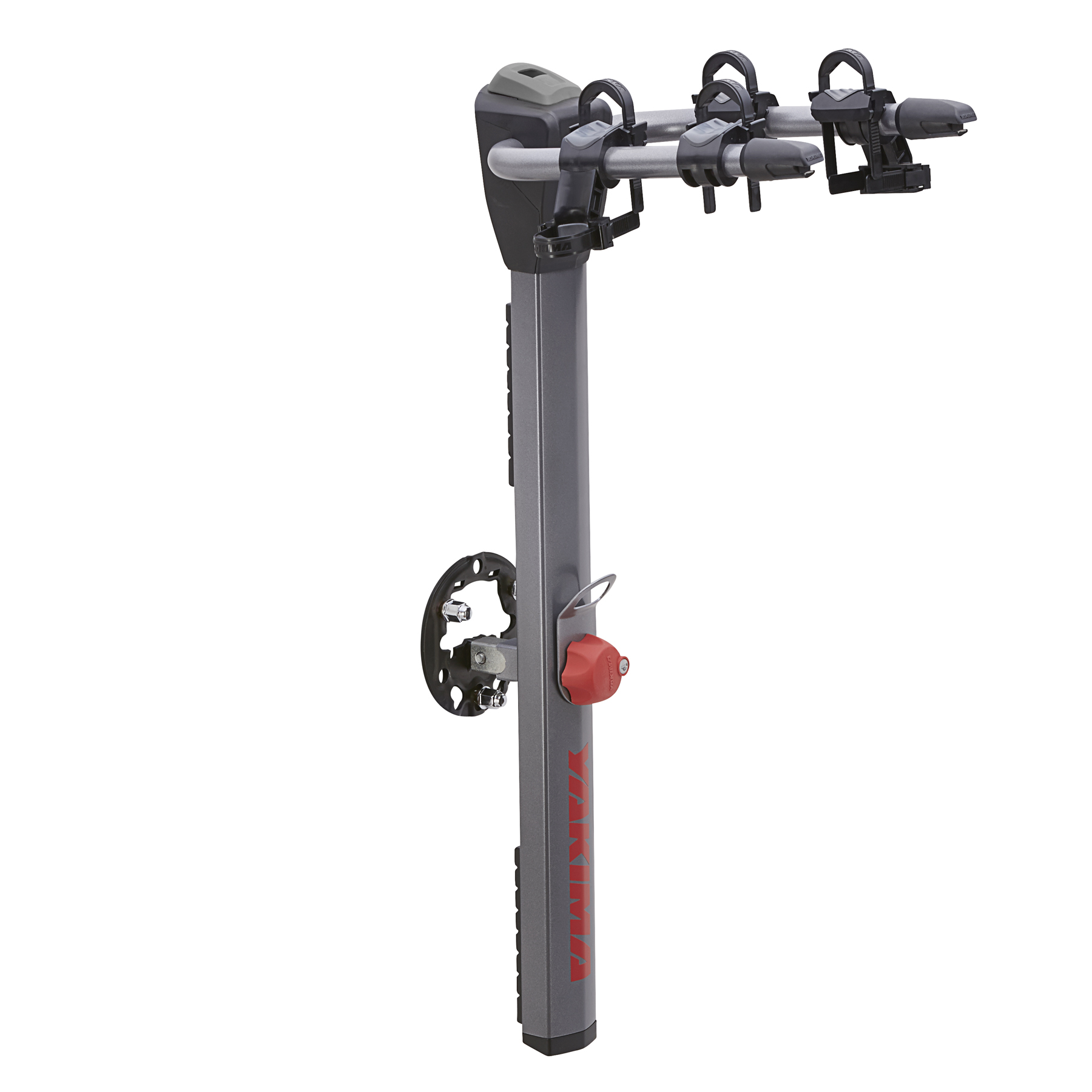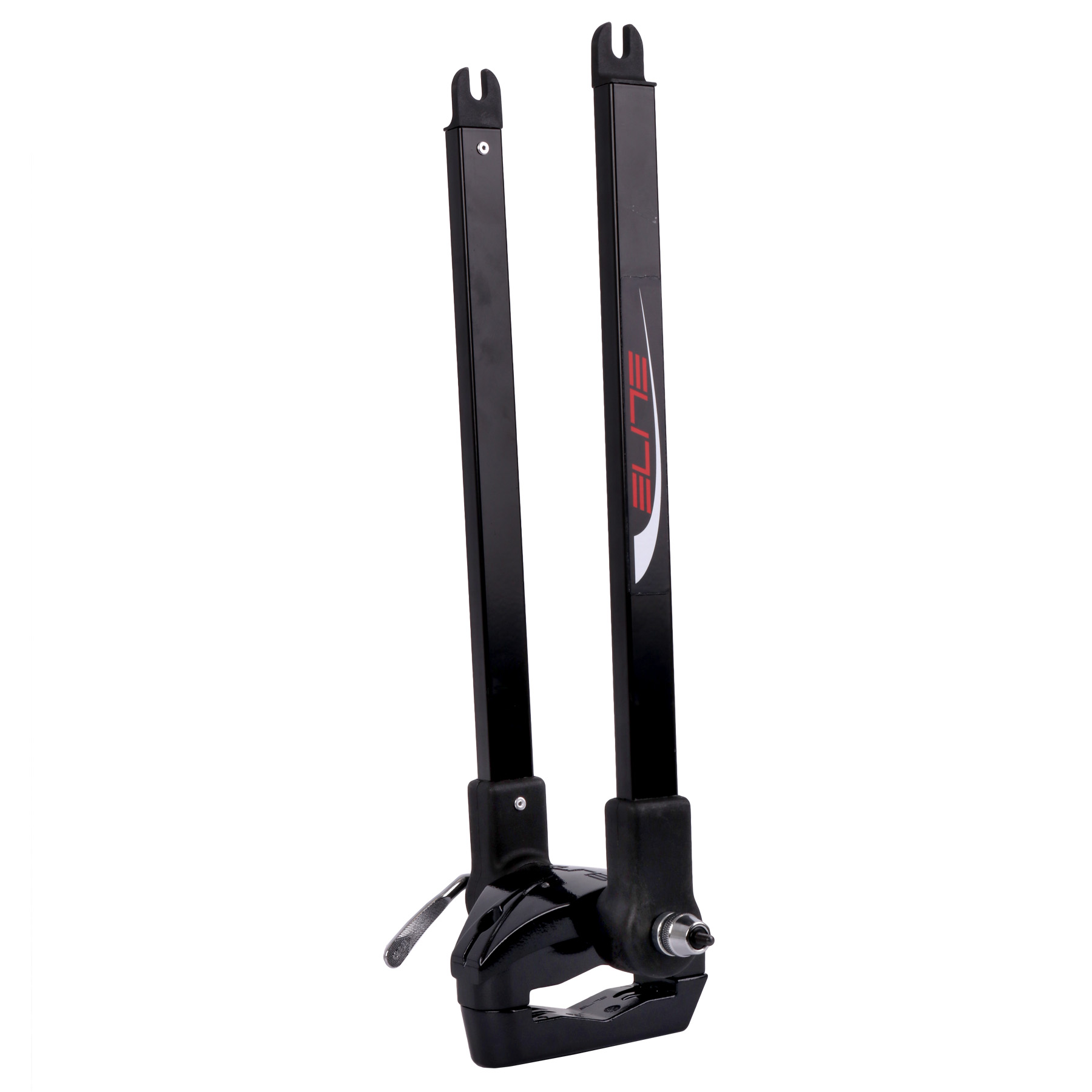- Home
- Cycling
- Bike Accessories
- Bike Racks & Transport
- Bike Racks
Get Your Hands on the Perfect Bike Rack
A weekend away, a family holiday or a trip to a bike park – the reasons for taking your bike with you by car, van or motorhome are wide ranging and the inside of your vehicle is often packed to the brim. The solution: a bike rack for your car. It will allow you to effortlessly carry up to four bikes. You can choose between a roof rack which keeps your rear view clear or a conveniently fitted rear bike rack. What's more, many new bike racks are also compatible with e-bikes. Here, you can expect the very best selection of bike racks at reasonable prices. Curious to find out more? Click here Read more
The Bike Rack – Your Car's Backpack
A cycle rack for cars is often also a foldable holding rod or rack frame, which can be installed on the car outside the passenger area as a bike transport solution – making a kind of backpack for the vehicle.
So you're wondering what the benefits are? The entire interior of your vehicle remains at the full disposal of your passengers and their luggage. On the bike rack, you will find fixing points for the rims or tires and one or more cross bars with frame clamps, which you can use to effortlessly fix your bike – without having to disassemble it.
Everything firmly fixed to the rack? Now you can get going, but it's never quite as easy as it looks. To avoid any nasty surprises prior to the journey during loading, during the journey on the motorway or when unloading your belongings, please have a quick glance at the following chapters.
Bike Racks – What Do I Need to Bear in Mind?
Even if you want to swiftly purchase a bike rack for your car online at BIKE24, it is advisable to firstly ask the following questions:
- What Is the Best Bike Rack for a Car?
- How Many Bikes Do I Want to Carry?
- How Heavy Are the Bikes or E-Bikes That I Want to Transport?
- What Loads Am I Permitted to Carry with My Bike Rack on the Car?
- What Are the (Legal) Requirements to Consider When Driving with a Bike Carrier?
- How Fast Should I Drive with the Bike Rack Loaded?
Top Shopping Tip 💡: A Comparison of Roof Racks, Tow Bar Bike Racks and Rear Carriers
There are countless bike rack systems available on the market and a wide choice of them awaits you in your favorite shop. To ensure you choose the right model for you in the long term, let's start by answering the first question...
What Is the Best Bike Carrier for a Car?
The perfect bike rack is available for virtually any type of car. They can be divided into three different types:
- Bike racks for the vehicle roof, also called a roof-mounted rack
- Bike racks for the hitch, the so-called tow bar bike rack
- Bike racks for the tailgate, the so-called tailgate carrier
Regardless of which type you choose, the rack and the bikes can be secured with locks on many of the current models. These are often already integrated ex works on high-quality models. However, they can also be easily retrofitted on more reasonably priced models with simultaneously locking cylinder sets, which are also available at your favorite bike shop.
You can find out more about the advantages and disadvantages of the mounting types in the following chapters.
The Roof Rack
To carry bikes using the roof rack, at least two roof bars must first be fitted to the car, also known as cross bars or raised rails. These often consist of a lightweight aluminium profile and feet covering a length of over one metre. The attachment to the feet can be made at certain roof points, on the raised rail or directly on the roof in connection with the car door frame. A connection is established using clamps in the case of raised rails or roof bars being fitted directly on the roof. The feet can often be screwed on or tightened with an Allen key or knurled nut.
Our saving tip 💡: A number of car manufacturers integrate the cross bars directly into the roof rails. Simply fold them down, and you're good to go!
Many car drivers opt to leave the roof bars attached to their vehicle, for example, when on holiday, as they can often be locked and wind noise and additional fuel consumption are bearable. The actual bike rack or racks are secured to the roof bars by means of clamps or a screw connection. The bike racks comprise a base rail, which is often fitted with additional bike holders and a foldable cross bar, which is fitted to the frame or front wheel.
Those who are feeling rather sporty on their travels and are able to tackle dismantling the front wheel, have the option of using an aerodynamically optimised bike rack. The bike is connected to the roof on the rear wheel and the fork with the rack. The roof bars usually weigh around 5 kg and the bike roof racks are a similar weight. It is therefore rather easy to handle the actual rack when one person is fitting it.
Minor flaw: Lifting and lowering the bikes onto the bike roof rack will need to be performed at chest or head height.
The Tow Bar Bike Rack
As the name suggests, the tow bar bike rack is fitted on the tow bar. The prerequisite here is that a tow bar is already installed on the vehicle. This is first of all lowered onto the tow ball of the tow bar to secure the bike rack. Then to ensure a secure connection, the holding clamps must be clamped using a screwing or clamping device. This type of connection can usually also be locked to prevent thieves from getting their hands on your prized possessions.
The carrier itself usually comprises a foldable – horizontally loaded – basic construction made of aluminium, which is provided with two or more rail supports and an upright support arm, on which the cross bars/holding clamps are secured. Many tow bar bike racks are rounded off with a light and licence plate holder, as the racks tend to obscure these parts of the vehicle. The reverse, indicator and registration plate lamps attached there are connected to the tow bar power supply via a cable. The bikes only need to initially be lifted a few centimetres off the ground onto the carrier. A number of manufacturers now even offer loading ramps for even easier loading and unloading. When it comes to important features of the tow bar bike rack, we recommend a model that swings away from the boot lid, so that you can easily access your luggage when you are on the road with your bikes on the carrier. Depending on the number of bikes, the tow bar bike rack weighs around 15 – 20 kg unloaded.
The Rear or Tailgate Carrier
Rear carriers are fitted directly to the tailgate of the car – virtually in its slipstream. With this in mind, they are well suited to high-roofed estate cars or vans, but are also an interesting option for small cars with limited roof space. Similarly to the tow bar bike rack version, the foldable aluminium frame of the bike carrier also comprises a basic construction with rail supports and a support arm, on which the cross bars/holding clamps are secured. The car bike carrier is itself connected to the tailgate with specially adjustable clamps, which are naturally provided with paint protectors. On some models, the bike carrier is also supported on the fender or on the tailgate. The bike carriers often need to be lifted over a metre when lifting, however this is greatly influenced by the type of vehicle in question. To ensure you can conveniently access your luggage even with a heavily loaded carrier (e.g. 4 bikes) on board, it is worth considering stronger gas struts for the tailgate. Tailgate carriers are in the middle of the field when it comes to handling with a dead weight of 10-15 kg.
How Are the Bikes Securely Fastened to the Carriers?
Once lifted onto the carrier, fastening the bike to the cross bar or support arm is started on all the carrier types. Tube clamps are located at the end of them. These are used to connect the bike to the carrier via the frame. Your bike is therefore securely positioned and upright. The clamps are usually positioned on the frame (top tube or bottom tube) and securely clamped to the tube by means of quick release fasteners. Effective car bike racks offer a built-in torque limiter at this point to ensure that even delicate carbon frames can be optimally clamped. Virtually all clamp designs feature a rubber or plastic coated frame in order to protect it.
We continue by fixing the frame to the rail system, this is equipped with tire/rim holders, which can often be adjusted to the wheelbase without any tools. Rim retaining straps can be found on the holders, which enable simple and reliable fastening to the wheels and tires.
Tip 💡: Before making a purchase, it is best to check the clamp attachments and rails to ensure that the frame shapes, tube diameters and tire widths suit your bikes and your family.
Which Bike Carrier Attachment Is Most Effective?
Which attachment type is most effective depends on the type of car or bodywork your vehicle has:
- For example, roof bike racks aren’t the best choice for vans and high-roofed estate cars in terms of their loading, wind resistance and resulting increased fuel consumption and swaying. Tow bar bike racks and tailgate carriers are often the wiser choice here.
- You will rarely see a tow bar or large tailgate on a sports car and seldom on higher end coupés. A roof rack is recommended in such cases.
- Drivers of mid-range saloons and estates tend to have the freedom to choose their preferred model.
SUVs are usually so high that tow bar bike racks are often selected for their convenience.
So you’ve gained an insight into the possible installation options, now let’s continue with the question...
How Many Bikes Do I Want to Carry?
The magic limit for the maximum number of bikes you can carry on commercial bike rack units is often 4 bikes. You can normally safely travel with 1-3 bikes on your roof, however in certain conditions 4 bikes are also possible. Rear bike racks mounted on the tow bar are available in versions for 2-4 bikes. Extensions for 2 additional bikes are also offered for many different models. The vast majority of tailgate carriers hold two bikes, but models are available for up to four.
If you need to take more than four bikes on your travels, there is also the option of combining a roof rack and a tow bar bike rack or rear carrier.
An important prerequisite in order to be able to utilise the maximum capacity, is standard dimensions (wheelbase/bike length should not be wider than the base rail system or the vehicle) and standard bike weights (max. individual weight of 15 kg).
E-bikes can also be transported with many existing bike carriers, although in most cases the number you can carry is lowered. You can find further details on this in: ‘Special Bike Carriers for E-Bikes’.
Special bikes call for special solutions – for tandems, cargo bikes, tricycles etc. special adjustments often need to be made to the bike carriers and the number of bikes you can transport is greatly limited. More detailed information on vehicle load capacity and carrying capacity can be found under ‘What Loads Am I Permitted to Carry with My Bike Rack on the Car?’.
How Heavy Are the Bikes or E-Bikes That You Want to Transport?
The fields of use of modern bikes vary just as much as their weights:
- a modern road bike weighs approx. 7-10 kg
- a current cross/gravel bike: approx. 11-13 kg
- an MTB currently: approx. 10-17 kg (Hardtail to Fully)
- a touring bike: approx. 12-17 kg
- an e-bike: approx. 25-30 kg with battery and approx. 22-27 kg without battery
Ideally pop your bikes on the scales before you leave home. This can be done using a set of standard bathroom scales.
To give you an idea of the total loads that can be moved on your future bike carrier, we have calculated a few weight examples for you:
- Family excursion with three touring bikes: 3 * 14 kg = 42 kg
- MTB touring weekend with two MTBs: 2 * 12 kg = 24 kg
- Bike trip with two city e-bikes: 2 * 25 kg = 50 kg
- Competing with four road bikes: 4 * 8.5 kg = 34 kg
What Loads Am I Permitted to Transport with My Bike Rack on the Car?
In order to correctly interpret the details in the bike carrier specifications and meet the legal requirements, let's first of all define the key terms.
- Payload... is the mass of the load, with which a bike carrier is allowed to be safely loaded and moved.
- Load capacity... is the mass of the load (people + luggage inside and outside), which is allowed to be transported according to the vehicle registration.
- Bearing load... is the mass, which is allowed to be transported on a car with a tow bar fitted according to the vehicle registration (depending on the mounting point, main vehicle fame and inherent stability of the tow bar).
- Maximum load... is the mass, with which the tow bar is allowed to be loaded after deducting the dead weight of the carrier itself.
- Roof load... is the mass of the entire load on the roof (roof bars, bike carrier, bikes), which is allowed to be transported according to the vehicle registration.
Proceed as follows to find out how heavy the bikes may be on the car bike rack...
...on a tow bar bike rack:
- Determine the bearing load on the vehicle registration certificate
- Determine the maximum load: Bearing load - carrier dead weight = maximum load
- Compare the maximum load with the payload of the bike carrier
- Compare the payload with the total weight of the bikes to be carried
- Observe the load capacity when loading for your entire luggage
... on a roof rack:
- Determine the roof load on the vehicle registration certificate
- Determine the maximum load: Roof load - carrier dead weight = maximum load
- Compare the maximum load with the total payload of the roof racks
- Compare the individual payloads with the individual weights of the bikes to be carried
- Observe the load capacity when loading for your entire luggage
... on a tailgate carrier
- Compare the payload with the total weight of the bikes to be carried.
- Observe the load capacity when loading for your entire luggage
Based on the examples below: ‘How Heavy Are the Bikes or E-Bikes That I Want to Transport?’, recommendations are made for using roof racks, tow bar bike racks and rear carriers.
Many basic roof racks usually permit loads (payloads) of 70 kg, but 100 kg loads are also a possibility with an appropriate roof load. The individual bike racks on the roof mostly have payloads of 15 kg, or a maximum of 20 kg. This is insufficient for e-bikes, but plenty for all the other bikes in our examples. Tow bar bike racks often permit payloads of up to 60 kg, some models even up to 70 kg. This is plenty, for example, for four trek bikes or even two heavy e-bikes. Payloads of 30-45 kg can be reached on rear carriers, which makes them the ideal choice for a weekend away mountain biking in pairs or couples.
Special Bike Carriers for E-Bikes
Regardless of whether an electric mountain bike, electric trek or electric road bike is your cup of tea, the amount of motor-assisted bikes and their enthusiastic owners is on the up. Thanks to an electric motor, these innovative bikes are able to reach 25 km/h or in the case of S-pedelecs 45 km/h, with both models being able to swiftly accelerate to such speeds. All load bearing or supporting parts such as frames, brakes, wheels and chassis also need to be accordingly designed in a much more stable manner. These essential arrangements, along with the drive system, equal a total weight of 20-30 kg.
If you fancy taking your e-bikes on your break away, you should consider a special e-bike carrier developed with your safety in mind. Appropriate models, such as those you can find at BIKE24, often feature an “E-bike compatible” manufacturer label. This label gives you absolute peace of mind. Bike carriers approved for bikes with motor assistance take the additional weight of the e-bikes in consideration by means of a particularly high payload. The bearing load and roof load on the vehicle, which is stated on the registration certificate, must not be exceeded. You will find example calculations under: How Heavy Are the Bikes or E-Bikes That You Want to Transport?
The space requirements on the carrier should also be taken into consideration when planning how many bikes to take with you. We generally recommend the tow bar bike racks and rear carriers where ergonomic loading is concerned.
What Are the (Legal) Requirements to Consider When Driving with a Bike Carrier?
The legislator states the following:
- A third number plate must be attached to the bike carrier when tow bar bike racks are in use. An extra vehicle inspection sticker is not necessary here.
- Any type of bike carrier must not obscure the lights or an additional lighting unit must be fitted to the carrier.
- Any type of bike carrier may only protrude twenty centimetres to the left and right when loaded, there must be no sharp or pointed edges.
- A speed limit is not specified on UK roads. Find out more about the topic under How Fast Should I Drive with the Bike Rack Loaded?
We also recommend taking note of the following:
- When using roof racks, it is essential that you observe the clearance height, for example, under low bridges or in underground car parks.
- Please note the increased overall length for rear carriers.
- We recommend choosing parking spaces with plenty of maneuvering space to enable simple lifting and lowering of your bikes.
- Loose or easily removable objects should be stored in the boot, in order to prevent the carrier from being overloaded and to keep thieves away from your pride and joy.
- During your journey, take time to ensure that the load is securely fastened, for instance, while taking a break.
How Fast Should I Drive With the Bike Rack Loaded?
The most important part first: There is no specific legal speed limit in the UK.
However, when it comes to ensuring your own safety, it is important to follow the recommended speed/speed limit from the manufacturer and observe this due to liability issues. Independent tests have indicated that the recommended speed limit is 75-80 mph. Fuel consumption does not increase sharply, wind noises are moderate, the vehicle remains continuously under control and the bikes safety on the carrier is guaranteed. The latter not only protects other road users, but also ensures that your prized possessions are in safe hands on the bike carrier and that adventure awaits you once your bikes have been unloaded. In poor weather conditions, such as wind and storms, it is advisable to reduce your speed even further.
A Comparison of Roof Racks, Tow Bar Bike Racks and Rear Carriers
| Roof rack | Tow bar bike rack | Tailgate carrier | |
| Carrier assembly/ disassembly |
⭐ ⭐ ⭐ Building it from two main components (roof bar & bike rack) involves more assembly and setup time. |
⭐ ⭐ ⭐ ⭐ ⭐ Out of the box - meaning it can be intuitively assembled and dismantled in most cases by just one person in five minutes. |
⭐ ⭐ ⭐ Needs a slightly more time-consuming pre-assembly step with tools and perhaps the help of a second person. |
| Bike assembly |
⭐ ⭐ ⭐ Depending on the vehicle, bike weight and physical conditions, lifting it is strenuous, or a ladder might be needed. |
⭐ ⭐ ⭐ ⭐ ⭐ Even e-bikes weighing over 20 kg can be lifted on by most people without any issues or even pushed on with ramps. |
⭐ ⭐ ⭐ ⭐ Bikes can be lifted onto the carrier by both young and old cyclists with moderate exertion. |
| Compatibility |
⭐ ⭐ ⭐ ⭐ Compatible roof bars are available for virtually all vehicles (even sports cars). |
⭐ ⭐ ⭐ Only possible if a tow bar is already installed on the vehicle or subsequently fitted (additional costs). |
⭐ ⭐ ⭐ Not available for all vehicles – there is less choice of carriers on the market. |
| Driving |
⭐ ⭐ ⭐ Increased fuel consumption, considerably more wind noise when driving over 60 mph, handling deteriorates particularly in windy conditions. |
⭐ ⭐ ⭐ ⭐ Increase in fuel consumption hardly noticeable, well-balanced car handling on level surfaces and slight increase in wind noises. Generally limited maneuvering capability when parking. |
⭐ ⭐ ⭐ (⭐)* In the case of low roof heights, more wind noise, increased fuel consumption and worse handling. Partly limited maneuvering capability when parking. *heavily dependent on the vehicle height. |
| Capacity |
⭐ ⭐ ⭐ ⭐ (⭐)* The actual bike carriers can be individually loaded with 15 to max. 20 kg. This individual weight is insufficient for the majority of e-bikes, but 4 standard bikes weigh 60-80 kg in total. *Depending on the vehicle roof, the roof bars permit a payload from 70 to even 100 kg and can also be used for roof boxes, baskets or for transporting other bulky items. |
⭐ ⭐ ⭐ ⭐ ⭐ With a potential payload of 60-70 kg, it is ideal for 3-4 standard bikes or 2 e-bikes. ⭐ ⭐ ⭐ ⭐ ⭐ With a potential payload of 60-70 kg, it is ideal for 3-4 standard bikes or 2 e-bikes. |
⭐ ⭐ ⭐ ⭐ With a payload of 30-45 kg, it is well suited for 2-3 standard bikes or just one e-bike or two light version e-bikes. |
| Estimated cost (to carry two bikes) |
⭐ ⭐ ⭐ ⭐ ⭐ 2 * roof bars approx. €150 2 * bike carrier approx. €100 per unit = €200 |
⭐ ⭐ ⭐ 1 * tow bar bike rack approx. €550 |
⭐ ⭐ ⭐ ⭐ 1 * rear carrier approx. €450 |
| Overall ranking (∅ approximate, without *) | ⭐ ⭐ ⭐ ⭐ | ⭐ ⭐ ⭐ ⭐ | ⭐ ⭐ ⭐ |
